#Experimental Safety Vehicle (ESV)
Text


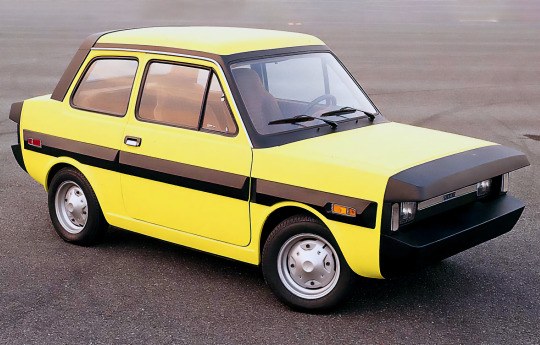
Fiat ESV 1500, 1972. Fiat made 13 versions of the Experimental Safety Vehicle which was based on the rear-engined 500 and also used parts from the 126 for a competition created but the American NHBS (National Highway Safety Bureau, later the National Highway Traffic Safety Administration, NHTSA).
#Fiat#Fiat ESV 1500#1972#safety vehicle#Experimental Safety Vehicle#experimental vehicle#1970s#rear engine#concept#prototype#NHTSA
250 notes
·
View notes
Text

Crash!
The NHTSA funded Viking VI after its 40 MPH barrier crash test at Dynamic Science in Phoenix, Arizona. (Impact was actually at 41.2 MPH - they had never tested a car that lightweight before and misjudged the settings of the test catapult).
Also like a Phoenix, Viking VI would rise again too. The center chassis tub was undamaged after the test, so it was rebuilt as Viking VI MK II.
Today it is the only existing example of the decade-long series of Experimental Safety Vehicles (ESVs) funded by the U.S. Department of Transportation. In this program, experimental car designs from Fairchild-Fairchild, AMF, GM, Ford, Chyrsler-Calspan, Mini Cars Inc. and the VRI were funded to create the worlds safest car. This was the U.S. DOT's 1970s decade long "moon shot" to jump start safer car designs.
Viking VI was the last car funded in the DOT ESV project. At the close of the program, no manufacturer had yet met the requirement for the lightest category of design criteria (the earliest generation of ESVs topped the test weight scale at near 6000 lbs!). The VRI delivered, and Viking VI was presented for testing at an empty weight of 1250 lbs.
Viking VI is unique as it is the only Viking car to have fully enclosed wheels on all four corners.
Power was supplied by a 1.6 litre Subaru Boxer-4 with selectable two-cylinder/four-cylinder operation. The GM valve disabler form the Cadillac 4-6-8 system was adapted for this purpose.
Later a Subaru 1.0 litre three-cylinder from a Japanese market kei car was installed, and that is how it remains powered today.
#classic cars#exotic cars#sports cars#vintage cars#Viking VI#Experimental Safety Vehicle (ESV)#Vehicle Research Institute (VRI)
0 notes
Photo

Mercedes-Benz Experimental Safety Vehicle ESF 22 - Mercedes-Benz Museum Stuttgart . The Experimental Safety Vehicle ESF 22 was the third milestone in Mercedes-Benz’s ESV Program. This international research program sought to improve the safety standards in automobiles. Thanks to airbags and belt tensioners, the ESF 22 gave the occupants a good chance of survival in the event of a head-on impact against a rigid barrier at 40 mph. Cylinders V8 Displacement 276 cu in Output 143 kW at engine speed 4500/min Production period 1973 Units produced 1 #mercedes #mercedesbenz #mercedesesf #mercedesv8 #mercedessafety #experimentalsafetyvehicle #mercedeslife #mercedeslifestyle #mercedesheritage #classiccars #classiccar #luxurycars #traveling #travelgram #travel #enjoyinglife #carmuseum #museum #luxury #mercedesmuseum #airbag #research #bestcars #vintagecars #esf #luxuryvehicle #photooftheday #history #carhistory #oldtimers (at Mercedes-Benz Museum) https://www.instagram.com/p/Cnsjt9XoBZ3/?igshid=NGJjMDIxMWI=
#mercedes#mercedesbenz#mercedesesf#mercedesv8#mercedessafety#experimentalsafetyvehicle#mercedeslife#mercedeslifestyle#mercedesheritage#classiccars#classiccar#luxurycars#traveling#travelgram#travel#enjoyinglife#carmuseum#museum#luxury#mercedesmuseum#airbag#research#bestcars#vintagecars#esf#luxuryvehicle#photooftheday#history#carhistory#oldtimers
1 note
·
View note
Photo

Mercedes ESF 22 Concept - 1973 by Perico001 Experimental Safety Vehicle The ESF 22 was the third milestone in Mercedes' ESV Program. This international research program sought to improve the safety standards in automobiles. Thanks to airbags and belt tensioners, the ESF 22 gave the occupants a good chance of survival in the event of a head-on impact against a rigid barrier at 65 km/h. 4.520 cc V8 195 PS @ 4.500 rpm 1 ex. Mercedes-Benz Museum Mercedesstraße 100 Stuttgart Deutschland - Germany December 2013 / July 2014 https://flic.kr/p/2jyeg4K
4 notes
·
View notes
Text
Memorable Concept Cars of the Malaise Era: The 1970s Weren’t Entirely Bad
After the fabulously outrageous dream cars of the 1950s and the cleaner, cooler post-modern concepts of the 1960s, the 1970s were something of a letdown. As the most, er, seasoned staffer at Automobile, I was handed this assignment—and promptly found I’d need to search the Internet to come up with enough cars to make a list, so forgettable a decade of design it was. It wasn’t much better elsewhere in the car world, either, with the likes of the Insurance Institute for Highway Safety (IIHS) pricing young buyers out of Pontiac GTOs, Ford Mustang Mach Is, and Plymouth Road Runners with usurious insurance rates. Then there came a clampdown for SAE horsepower figures, with manufacturers switching from gross to net horsepower.
The result? By the ’73 model year (which launched months before the OPEC embargo) for example, the 1970 Oldsmobile 4-4-2 W30’s 455 cubic-inch V-8’s 370 gross horsepower was downgraded to 250-270 horsepower (the same engine was also in the far more popular Cutlass Supreme), and for the 350 cubic-inch V-8 versions of both cars, those sad figures fell further, to just 180-200 horsepower. In short, enthusiasm for cars wasn’t at its highest, nor was inspiration for their design.
Thankfully, the likes of Pininfarina, Bertone, Larry Shinoda, and Zora Arkus-Duntov were still interested in sleek sports cars, so this list isn’t just about ugly, 5-mph-bumpered Checker Marathon-wannabees …
1970 Lancia Stratos 0
Imagine the complaints from modern SUV drivers who don’t want to contemplate climbing down into a Miata, if they had to try to fit themselves into the Stratos 0. Beautiful to look at with its Bertone design led by Marcello Gandini, though with a driver/passenger position that might create its own yoga position, the Stratos 0 produced one of the best, most desirable “production” cars of the era, the Lancia Stratos HF.
1970 Ferrari 512S Modulo
A Pininfarina design led by Paolo Martin and unveiled at the Geneva motor show, for which it was painted black, it’s easy to imagine that Pinin and the Lancia Stratos 0’s Bertone might have been spying on each other during 1968 and ’69. The sci-fi-look Modulo was powered by a 550-horsepower Ferrari V-12, and the driver and passenger entered by sliding the windshield down into the front trunk.
1970 Mercedes-Benz C111
The Mercedes-Benz C111 actually goes back to the three-rotor Wankel-powered, fiberglass-bodied car of 1969. The follow-up for 1970 went to four rotors and fuel injection for 350 horsepower and a top speed of about 186 mph. Mercedes built 16 C111s through the ‘70s, though after the four-rotor, it switched to diesel power, an engine that by the 2020s is finally going the way of the Wankel.
1971 Toyota SV-1
The Toyota SV-1 proved to be a mildly disguised Celica, which premiered in the U.S. as a ’72 model. It truly was a Japanese Mustang, available with a notchback and trunk or a fastback-hatchback replete with ’65 Mustang fastback-style scallops in the c-pillar. But the Toyota Celica was much smaller than a contemporary Ford Mustang, 164 inches long on a 95.5-inch wheelbase, versus 189.5 inches on a 109-inch wheelbase for the new Torino-based ’71 Mustang (Knudsen’s idea – Henry Ford II fired him shortly thereafter). The new Toyota Celica thus anticipated a world in which it’s more important to go fast around corners than fast in a straight line.
1972 Fairchild-Republic Experimental Safety Vehicle
By the late-‘60s, the annual U.S. highway fatality rate of 65,000, roughly twice what it is today, triggered the Experimental Safety Vehicle (ESV) program beginning in New York State. By 1972, GM, Toyota, and Volvo were among the manufacturers showing massive sedans built for optimal passenger safety. Then there was the 1972 Fairchild-Republic ESV, a 5,500-pound all-wheel-drive sedan built by a defense contractor that had just concluded production of the F-105 Thunderchief supersonic fighter jet for the U.S. military. Powered by a 340 cubic-inch Plymouth V-8 with a Torqflite automatic, Fairchild-Republic’s ESV featured steering wheel and rear-seat ceiling airbags, a center high-mounted brake light (14 years before CHMSLs would become a Federal Motor Vehicle Safety Standard), a horn that beeped when the car was in reverse, and an overhead rearview periscope decades before rear-mounted cameras became common. With the type of huge bumpers that would deface many American and foreign cars by 1974, the Fairchild-Republic ESV had its front roof supports moved into a cab-forward position and rode on a semi-monocoque platform over a cage structure. It was ugly as hell, and predicted a future of boring, safe, heavy cars for unengaged drivers. With its appearance in a ’72 issue of MotorTrend, it is, unfortunately, the only concept from the decade that has seared into my memory, though the upside is that benefits from its advanced safety systems makes today’s sports cars and SUVs far safer and more crashworthy than anything produced 48 years ago.
1976 Chevrolet Aerovette
From its exterior design as much as anything else, this clearly is the mid-engine Corvette the 1970 Ford Mach II concept would have forced if that car had gone into production, and as Rory Jurnecka writes, it would have become the 1980 C4 Corvette had Zora Arkus-Duntov had his way. By the time the Aerovette hit the show-car circuit, OPEC was having its way with the U.S. automotive market, and Chevrolet’s big debut for the 1980 model year instead was the front-wheel-drive Citation compact.
1979 Ford Probe I
The shape of things to come was not the wedgy 1975 Triumph TR-7, but was instead this FWD, melted-soap-bar coupe concept, which infamously was designed to become the V-6-powered 1988 Ford Mustang. Hardcore Mustang V-8 fanatics flooded Ford’s Renaissance Center HQ with letters objecting to the car. Ford kept on the Fox-bodied Mustang and for 1988 launched the soft-edged V-6 Probe alongside it, targeting, in a much-less enlightened time, female drivers.
The post Memorable Concept Cars of the Malaise Era: The 1970s Weren’t Entirely Bad appeared first on Automobile Magazine.
Memorable Concept Cars of the Malaise Era: The 1970s Weren’t Entirely Bad published first on https://kwsseuren.tumblr.com/
0 notes
Link
Based on the latest Mercedes-Benz GLE, the ESV uses a plug-in hybrid powertrain and is capable of automated driving in several different situations.
0 notes
Text
Mercedes-Benz crash tests in the 1970s
Mercedes-Benz crash tests in the 1970s
In the early 1970s, just as part of the ESV programme (Experimental Safety Vehicles), Mercedes-Benz built more than 30 test vehicles to research into future automobile safety systems. It is with these ESFs that the brand reflects its many years of systematic activities for the development of vehicle safety. They prepare the way for numerous innovations, some of which are only ready for series…
View On WordPress
0 notes
Text
New Mercedes-Benz ESF concept to be ‘uncrashable’?
New Mercedes-Benz ESF concept to be ‘uncrashable’?
It seems that Mercedes-Benz is planning on conceptualising the idea an uncrashable car. According to a report by Australian publication Motoring, Mercedes-Benz global R&D chief, Ola Kalennius said he’s excited about his new ESF (formerly ESV, or Experimental Safety Vehicle), which is dubbed as the automaker’s safest vehicle ever.
“Safety is the core DNA of Mercedes and the ultimate goal is zero…
View On WordPress
0 notes
Photo
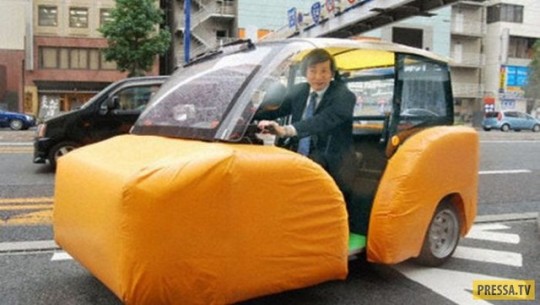
Самые безопасные автомобили (6 фото)
Существует такая аббревиатура - ESV (Experimental Safety Vehicle, «экспериментальные безопасные автомобили"). Оказывается таких автомобилей достаточно много было вариантов.
0 notes
Text



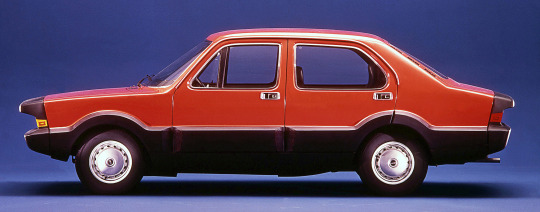
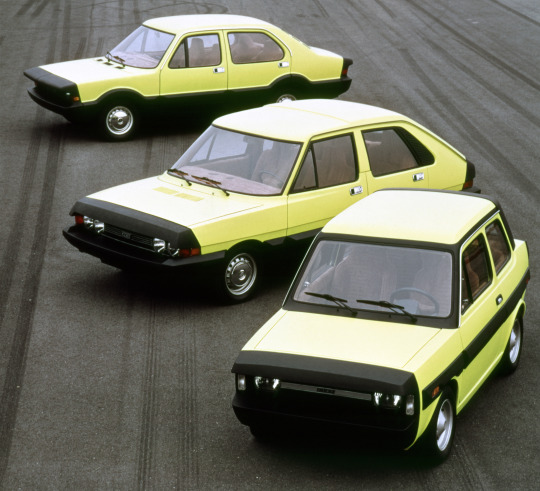
Fiat ESV 2500, 1973. The largest of Fiat's Experimental Safety Vehicles was based on the rear drive Fiat 124 so had a front engine/rear drive configuration but weighed almost twice as much as the car it was based on.
#Fiat#Fiat ESV#Fiat ESV 2500#safety vehicle#Experimental Safety Vehicle#concept#experimental vehicle#prototype#Fiat 124#1973#1970s
168 notes
·
View notes
Text
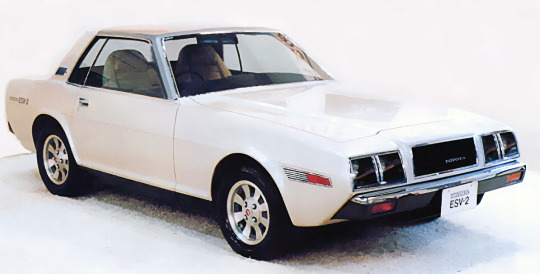

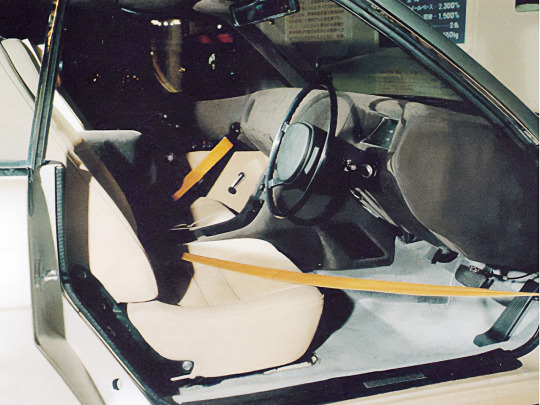


Toyota ESV-2, 1972. The second in a series of safety vehicle concepts that was presented at the 19th Tokyo Motor Show. It included features we now take for granted such as anti-skid brakes and air-bags.
#Toyota#Toyota ESV-2#1972#concept#prototype#safety vehicle#19th Tokyo Motor Show#anti-skid brakes#safety car#experimental car#research vehicle
209 notes
·
View notes
Text


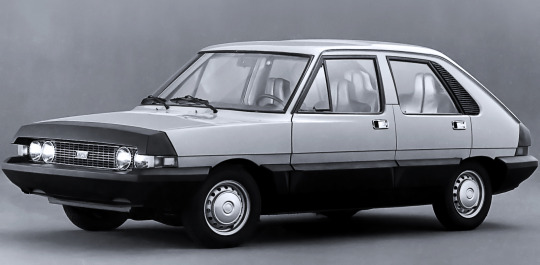
Fiat ESV 2000, 1973. Fiat entered the NHBS (National Highway Safety Bureau) in 3 classes. The Experimental Safety Vehicle 2000 was based on a Fiat 128 and used that car's front wheel drive platform and engine. The extra safety equipment meant it weighed 360 KG more than the production 128
#Fiat#Fiat ESV 2000#safety vehicle#experimental vehicle#concept#prototype#Fiat 128#front wheel drive#1973#1970s#NHBS
89 notes
·
View notes
Text
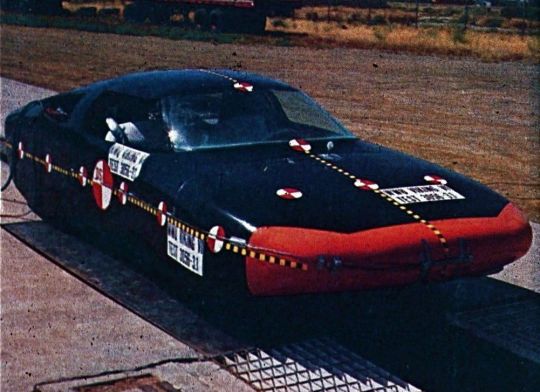
I'm ready to crash this party!
The Viking VI Experimental Safety Vehicle being lined up on the Dynamic Science Phoenix, Arizona crash test pad in May of 1980 for its 40 MPH frontal barrier crash test.
The gap in the grating just in front is where the highspeed cameras that record the performance of progressive crush of the chassis are located.
About 225 lbs of test instruments are hard mounted at the very rear of the Viking VI chassis for the test. The unanticipated effect was that it increased the total test weight of the vehicle by nearly 20%. In 14 years of crash testing, Dynamic Science had never crashed tested a car this light before (Viking VI weighed 1250 lbs. dry) and so the closing speed was overshot by 5% (measured at 41.2MPH when Viking VI hit the barrier).
The test was a success. The internal airbelts and knee bar allowed the two instrumented Sierra crash test dummies to walk away (or they could, if they could actually walk).
The center tub was repaired, and she remains road-worthy today - the only Experimental Safety Vehicle (ESV) of the 1970s funded by the DOT still in existence.
#classic cars#exotic cars#sports cars#vintage cars#viking vi#Vehicle Research Institute (VRI)#airbelts
0 notes
Photo
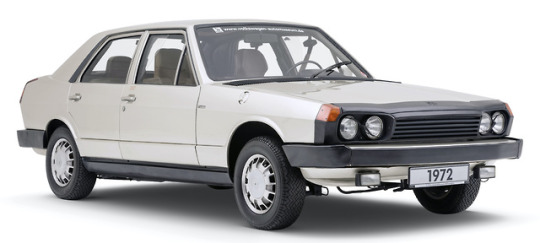
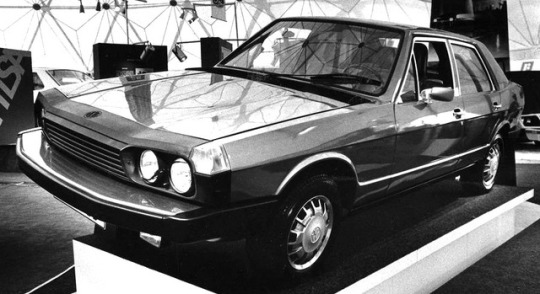

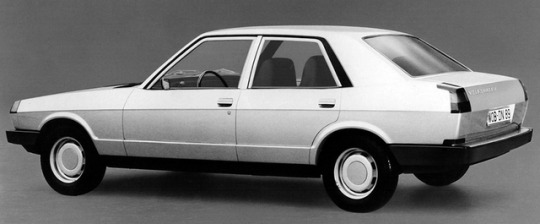
Volkswagen ESV, 1971. A safety car concept designed to keep passengers alive in a 50-mph crash, The VW ESV used number of features including anti-lock brakes and seatbelt pretensioners which were soon used on production models. However some ideas such as knee belts, fixed front seats welded to the centre tunnel and a blanket that deployed from the headliner onto the heads of passengers didn’t make it. The car is now on display at Volkswagen’s museum
97 notes
·
View notes
Photo

Mercedes ESF 22 Concept - 1973 by Perico001 Experimental Safety Vehicle The ESF 22 was the third milestone in Mercedes' ESV Program. This international research program sought to improve the safety standards in automobiles. Thanks to airbags and belt tensioners, the ESF 22 gave the occupants a good chance of survival in the event of a head-on impact against a rigid barrier at 65 km/h. 4.520 cc V8 195 PS @ 4.500 rpm 1 ex. Mercedes-Benz Museum Mercedesstraße 100 Stuttgart Deutschland - Germany December 2013 / July 2014 https://flic.kr/p/2jyizCj
3 notes
·
View notes
Photo

Mercedes ESF 22 Concept - 1973 by Perico001 Experimental Safety Vehicle The ESF 22 was the third milestone in Mercedes' ESV Program. This international research program sought to improve the safety standards in automobiles. Thanks to airbags and belt tensioners, the ESF 22 gave the occupants a good chance of survival in the event of a head-on impact against a rigid barrier at 65 km/h. 4.520 cc V8 195 PS @ 4.500 rpm 1 ex. Mercedes-Benz Museum Mercedesstraße 100 Stuttgart Deutschland - Germany December 2013 / July 2014 https://flic.kr/p/2jyeg2v
1 note
·
View note